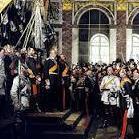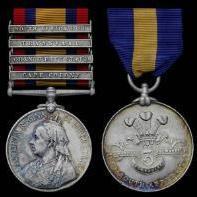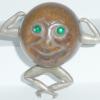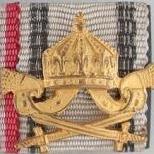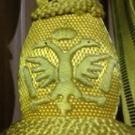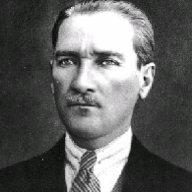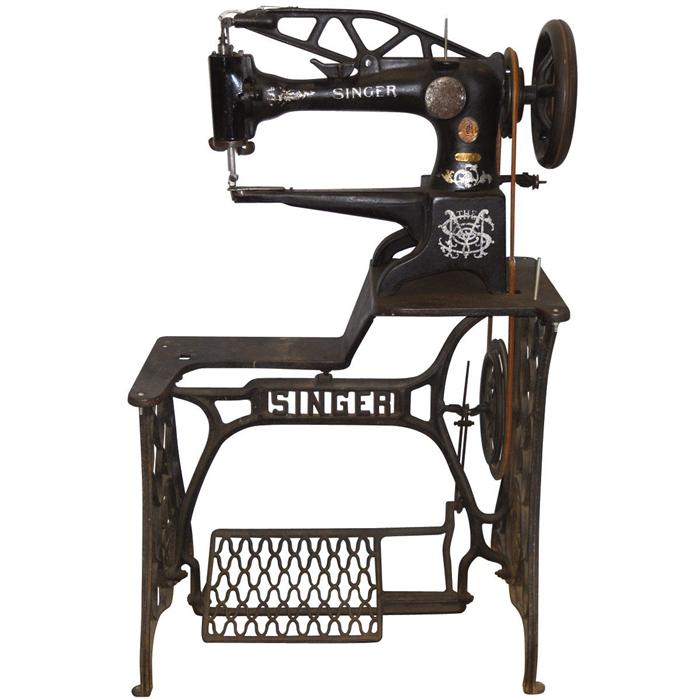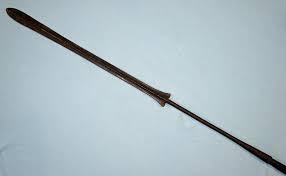-
Posts
1,385 -
Joined
-
Last visited
-
Days Won
3
Les last won the day on January 4 2012
Les had the most liked content!
Profile Information
-
Location
xxxx
Recent Profile Visitors
4,428 profile views
Les's Achievements
-
Yep, a nice ribbon. All of the S&L made versions I've seen lack ribbons, or have ones that are post-WWII. There are a few silver S&L made pieces out there, and IMO, if there were any made by the firm during the Third Reich era, these are the most likely candidates. I know of someone who contacted S&L enquiring about any records in the firm's files. S&L responded saying they had no information on them and couldn't confirm anything one way or the other. This one has angling on the lower arms of the cross that looks like it may have been shaped (by hand?) to give the appearance of wear. If you have access to a decent microscope, look to see if there are striations to run parallel to the arms, rather than sideways. When worn a cross would swing side to side, and any wear patterns would be horizontal, not vertical. Side by side swinging would dome the enamel and also leave a slight slope away from the center of the arms towards the outer edges. I have a S&L in it's original case, with oaks and a ribbon lacking a center-stripe. S&L didn't make a special ribbon for the oaks. If anyone is really interested I can supply photos. I'd consider selling it if anyone is interested and sends a PM to enquire.
-
In the aviation group are a small number of observers who were awarded the PLM. Leutnant Hans Georg Horn was a former infantry officer who became a flying observer in 1915, and in 1916-1917 specialized in low level ground attacks from the back-seat of a Junkers all metal mono-wing. He was decorated with the PlM in December 1917, and on the same day his pilot was decorated with the GMVK. Horn's stuff is in a private collection. ;)
-
Check out cemeteries and....places that make gravestones and similar monuments. I've come across several items that were not legally "dewated" such as sled mounted MG08, a German medium Minenwerfer on it's travelling mount, and several of the smaller versions that survived the WWII scrap drives. They are out there....
-

100 years ago, Orange rifles in Belfast....
Les replied to Chris Boonzaier's topic in The Great War 1914 to 1918
Today is the 100th anniversary of the day when the Easter Rising of 1916 took place. I wonder if any of those were used during the event. -
Started 100 years ago to the day.
-
Nice job! Next time you want to remove chrome, there's a better way than the abrasive method. I've used this method more than once. Muriatic acid, the same stuff that is dumped into pools and used to clean concrete, removes chrome fast and much easier than any other process. A gallon of the stuff is inexpensive....about the cost of two or three beers depending on brand, and where you buy your beer. If you do use muriatic acid, do it outside, wear old clothes, rubber gloves if you have them, eye protection, and do not breath the greenish yellow fumes. Afterwards wash whatever you strip the chrome from, well with a garden hose, and neutralize with good old baking soda. Wash your hands and any exposed skin also.
-
I have a Singer 29, with a very similar base type. The head on the Singer looks like the one below. Everything is either cast iron, or machined steel. It's heavy, built to last, and getting harder to find.
-
Mickey, the spear the wee one has in hand isn't Masai. Masair spears and swords have a characteristically shape with a long narrow appearance and flared ears close to the socket. The one in the photo looks more like some of the ones made in the northern part of Kenya, such as the Turkana, who liked leaf shaped spear heads. Peter, the "three" piece design with a metal head, and metal socketed butt, aren't necessarily ceremonial. The metal butt/tang socketed part was to keep the shaft from splitting when the spear was jammed into the ground, and then levelled at charging critters such as lions, etc. Without looking at the piece in hand, I can't say for certain what the flared section is all about. It may have been used to cover up a break which was welded over or re-enforced. Masai (and East African) spears prior to 1900 used to have very small metal spear heads and butts with long wooden handles. As metal became more common in the 20th century, the length of the metal started getting longer, and the wooden shaft smaller. Also, the early local iron made pieces have soft metal parts that bend very easily. After WWII, there's a noticeably change in the size of the metal, and also it's hardness. The attached photo is a typical post WWII Masai spear head shape, and also seen on Masai swords.
-
Salt in southern African traditional societies was a scarce and valuable commodity, and generally not used for tanning. Hides, if tanned, were processed using either vegetable or fat tanning methods. Hair loss even on newly made items is commonplace. The shield shape on the one you've shown is not limited to the Zulu's only. Other tribal groups in southern Africa also used the same exact type of shield. Also, during the Mpfecane period, Zulu splinter groups broke away from the Zulu and moved north into what is now Zimbabwe, parts of Zambia and into southern Tanzania. "Traditional" items associated with hunting and warfare, have always been hot tourist items since the 1950's. "Hollywood" has also bought (and had made) items for use in a range of films, not to mention "Zulu" in the early 1960's, and "Zulu Dawn" almost twenty years later. Props from those two films have even become collector items in some circles. Shields originally had a stick or pole inserted through the laced leather loops on the back. These are almost always missing on shields, period or made-for-the-tourist, because the size of the shield was awkward, and when removed, the thing could be rolled up for easier transportation or shipping home. Check out this link: http://hollywoodmoviecostumesandprops.blogspot.com/2011/10/costumes-and-props-from-zulu Look towards the bottom of the article and note the exact construction method as the one you've shown, used for a shield used as a promotional give-away prop for "Zulu" in 1964. Dating when items were made is not easy, and all to often based on guesswork and thinking something "looks old" or that construction methods are the same. Sometimes there are clues, and construction methods do change over time. One item I always look for is whether the iron used on swords, spear heads, etc, is truly hand forged iron, and not steel which was not available in traditional African societies who smelted, and forged their own iron before the spread of western made items changed their technology. Hand made iron takes time and a lot of labor to produce, resulting in traditional iron objects such as spear heads being smaller than those made after the WWI era when steel became plentiful and traditional iron making began dying out. With leather, dating is almost impossible without some documentation that comes with the item. It's very much a seat of the pants type thing at times.
-

All your Iron Cross be look like joke!
Les replied to Chris Boonzaier's topic in Germany: All Eras: The Iron Cross
The one on ebay has Philips-screw fasteners, for supports and to attach the hanger hook. Those fasteners weren't developed until after WWI. Chris, re the preservation attempts, try not to use anything that forms a hard layer on the surface. It seals whatever is in the wood and metal inside, and doesn't necessarily stop rust from eating it's way out. If there's surface rust, remove it, then apply a surface treatment to stop any moisture from getting to the metal and wood. If you can find a good hard paste floor wax, use that. Let everything set outside in the sun on a warm day, which drives moisture out, then apply the wax and buff it out and don't put it on too thick. It's a reversible process that doesn't f-it up the way a hard coated surface of an oil compound can do. The nice thing about a floor wax coat is it can be removed later by putting the thing out in the sun and buffing it away. Once it's done, keep it where the temperature and humidity remains relatively even throughout the year so the wood doesn't swell or crack. -

All your Iron Cross be look like joke!
Les replied to Chris Boonzaier's topic in Germany: All Eras: The Iron Cross
Bit more on these: https://en.wikipedia.org/wiki/Nail_Men -

All your Iron Cross be look like joke!
Les replied to Chris Boonzaier's topic in Germany: All Eras: The Iron Cross
Wow! I've seen those from period photos patriotic rallies and events. People offered a small amount of money donated to the war effort, and were then given a nail to hammer into a wooden iron cross. Really nice acquisition! -
Eric, Thanks for the heads-up on the thread. I read through it, and followed the link to the helmet site where the "decal" is discussed in detail with extremely good photos. The helmet site thread is straight-forward and isn't all that difficult to follow through to the obvious conclusion. Apparently a single individual has been responsible for making a painted on "decal" over many years. I'm surprised it took years for the item to get de-bunked. The helmet site article gets the use of XRF off of center, claiming it can't be used for authentication. It was never intended for that purpose. XRF can tell you materials composition within limits, and in the case of a decal or paint is capable of picking up paint composition under the decal, and then giving a reading that combines both. There's no problem with using XRF technology, as long as the person getting the results is aware of testing issues, and understands how to properly interpret the results. XRF applied to any material produced over more than one or two years, and in different batches can and will not usually be identical from batch to batch, because mixing materials and paints is not as much a science as it is making due with what's on hand and wartime shortages manufacturers having to make do with less than what "spec" calls for.


